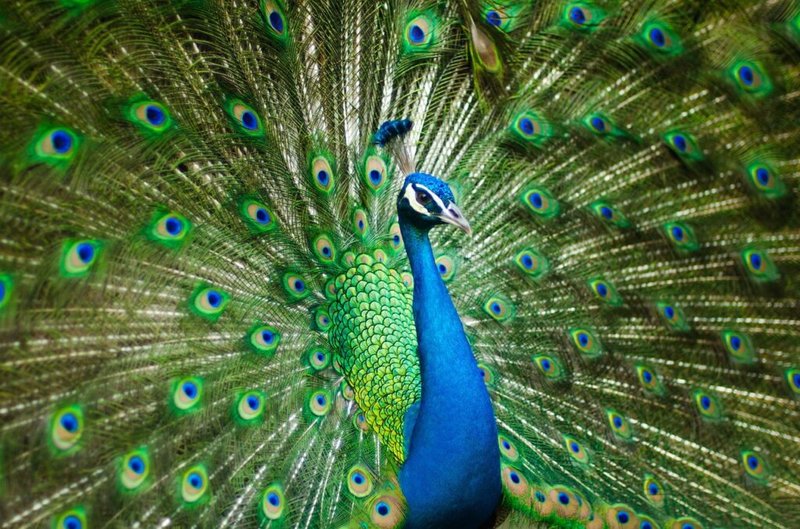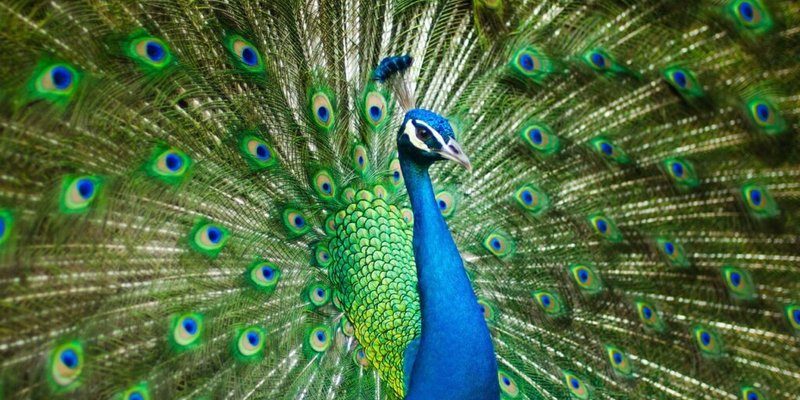
In many ways, the peacock acts as a mirror reflecting the values and beliefs of the cultures that embrace it. Just like how a shiny new toy can capture a child’s attention, the peacock’s dazzling plumage has captivated human hearts for ages. You might find it surprising how often this bird pops up in folklore, art, and religious symbolism. Let’s take a closer look at why the peacock holds such an important spot in local cultures and stories, revealing its many roles and meanings across the globe.
The Peacock in Indian Culture
India is one of the most prominent countries where the peacock reigns supreme in cultural significance. Known as the national bird, the peacock is often viewed as a symbol of grace and beauty. In Hindu mythology, the peacock is associated with Lord Krishna, who is often depicted wearing peacock feathers in his crown. This connection emphasizes the idea of beauty both in nature and in the divine, intertwining human appreciation with spiritual beliefs.
Moreover, peacocks are celebrated in Indian festivals and arts. They often appear in dances, paintings, and intricate artwork. For example, the traditional dance form of Kuchipudi sometimes features performers using peacock motifs and movements to represent the bird’s elegance. This cultural representation underscores the bird’s importance and its ability to inspire creativity and joy in celebration.
Interestingly, the peacock is also regarded as a harbinger of rain in many parts of India. When the peacock dances under dark clouds, it signals that the monsoon is approaching. This creates a fascinating link between the bird and the agricultural practices of local communities, showcasing how deeply the peacock is woven into everyday life.
The Symbolism of the Peacock in Ancient Greece and Rome
Moving westward, the peacock has made a significant impact on ancient Greek and Roman cultures. In Greek mythology, the peacock is associated with Hera, the queen of the gods. Her messenger, Argus, was said to have had a hundred eyes, which were later transformed into the eyes on a peacock’s feathers. This connection emphasizes the themes of watchfulness and protection.
The Romans, too, loved peacocks for their beauty and often used them in extravagant feasts. They considered peafowl a delicacy, serving them at lavish banquets. The peacock symbolized opulence and was often associated with luxury and status. You might picture a grand Roman villa with peacocks strutting around, showcasing the wealth of their owners.
This cultural appreciation also extended to art and sculpture, where peacocks were depicted in mosaics and frescoes, symbolizing immortality and resurrection. Their appearance in these artworks reflects the timeless allure of the bird and suggests that even the ancients recognized the peacock’s extraordinary presence.
Peacocks in Chinese Culture
In Chinese culture, peacocks symbolize prosperity and harmony. They are often associated with the beauty of nature and ideal femininity. The bird is frequently depicted in traditional artwork, embodying grace and elegance, much like the refined qualities expected of a woman in society.
Peacocks are particularly significant during weddings and auspicious events. They represent a harmonious marriage, and the parents of the bride may use peacock imagery to express their wishes for a joyful and prosperous union. This connection to love and happiness creates a deeper cultural meaning, turning the peacock into a powerful symbol of hope.
The belief in the peacock’s ability to ward off evil spirits is also noteworthy. Many households display peacock motifs or even keep peacocks on their property as a protective charm. This reflects how the peacock is intertwined with local customs and traditions, showcasing its revered status in Chinese cultural practices.
The Role of the Peacock in African Folklore
Across Africa, the peacock appears in a plethora of tales and myths. In many cultures, the peacock is associated with beauty and pride. For instance, some stories depict the peacock as a trickster character, using its dazzling feathers to outsmart predators and other animals. This cleverness teaches important lessons about self-worth and confidence.
In certain African tribes, the peacock is also seen as a symbol of wealth and fertility. Its association with vibrant colors and intricate patterns makes it a fitting emblem for celebrations, such as harvest festivals. The bird’s presence at these events often symbolizes prosperity, bringing good fortune to the community.
Moreover, some tribes believe that the peacock embodies the spirit of the ancestors, linking the living with their heritage. This deep connection illustrates the bird’s importance in storytelling, revealing how the peacock serves as a bridge between past and present.
Peacock Symbolism in Native American Traditions
In some Native American cultures, the peacock represents beauty and pride. While not as universally embraced as in other cultures, certain tribes have adopted the peacock into their folklore. Here, it symbolizes integrity and the importance of standing tall, much like the bird itself.
The feathers of the peacock are often used in ceremonial attire, showcasing their stunning colors. These feathers are believed to carry spiritual power, and wearing them is thought to bring good fortune and connection to the spiritual realm.
Additionally, stories about the peacock often revolve around themes of self-acceptance and personal growth. These narratives encourage individuals to embrace their unique qualities, much like the peacock proudly displays its vibrant feathers.
The peacock’s journey through cultures around the globe highlights its deep-rooted significance in local folklore. From being a symbol of grace in India to representing pride in African and Native American stories, this bird continues to inspire and connect people.
Whether you see them in a colorful painting, hear tales of their cleverness, or marvel at their beauty in nature, the peacock reminds us of the rich tapestry of human culture. It’s fascinating how one creature can embody so many virtues and play such diverse roles across different societies.
As we appreciate the peacock, we also celebrate the unique stories and traditions that make up our world’s cultural heritage. Next time you see a peacock, take a moment to reflect on its journey and the tales it carries—much like a storyteller sharing whispers of wisdom from the past.

